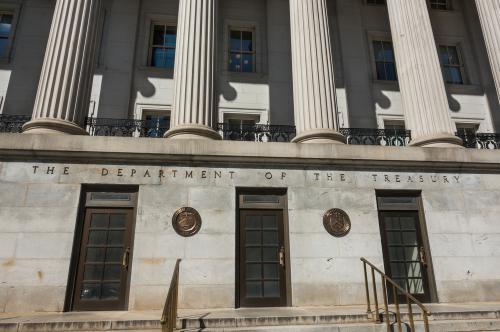At the height of the financial crisis in 2008, the Primary Reserve Fund ran into trouble, triggering a run on money market mutual funds. Investors pulled nearly $450 billion out of prime money market funds (MMFs) in just a few weeks, causing the funds to stop lending to big banks and industrial giants General Electric and Ford and endangering their ability to promptly meet payrolls and other bills. The government responded, quickly and creatively, with both a guarantee for existing MMF investors to stop the run, as well as an emergency liquidity facility, the Commercial Paper Funding Facility, to provide financing to companies that lost their access to short-term funds amid the turmoil.
In 2014, the Securities and Exchange Commission changed the rules for money market funds so this would never happen again. Those rules are working well. But some in the industry want Congress to undo them. That would be a mistake.
Before the crisis, prime MMFs (those permitted to invest in short-term IOUs issued by borrowers other than governments) were allowed to promise investors $1 for their shares even when the value of their portfolios fell below $1 a share. If values fell to less than $0.995 a share, the fund could no longer round up to $1, and a board could close a fund. Unlike banks, the money market funds weren’t required to hold capital or insurance to back up their $1 promise—even though they were investing in securities that fluctuated in value.
This structure created a classic investor run problem similar to the runs that banks faced before the creation of deposit insurance in the 1930s. Investors who believe the value of the investments will fall to less than $1 have an incentive to pull out their funds before others. The first investors to withdraw money will receive $1 per share. Those who wait will get only the (lower) market value—often with a delay. As investors run for the exits, funds sell assets to meet these redemptions. The sales cascade through the economy, pushing down the price of these assets and forcing big companies who borrow from money market funds to scramble for funding, making the problem worse.
In 2010, the SEC tightened the rules to reduce the credit and liquidity risk of the assets that prime money market mutual funds could hold. The SEC also required greater disclosure of the assets, but the rules cannot eliminate the risk of price fluctuations and thus the incentive for investors to be the first out the door.
So in 2014, the SEC changed the rules, which ultimately took effect in October 2016. Today, the value of both prime money market shares and shares of municipal tax-exempt securities sold to institutional investors float with the value of the securities in their portfolios. (The rules didn’t apply to money market funds sold to retail investors.) Funds that invest in U.S. Treasury and other sovereign securities were permitted to maintain the fixed $1/share value.
Since the rules went into effect, short-term markets have been functioning smoothly—and in a much less risky environment. Anticipating the change, some money market investors moved money from institutional prime funds and tax-exempt funds to funds that invested in less risky Treasury and government securities. The total amount of money invested in money market funds—nearly $3 trillion—did not change. It just shifted from riskier prime investments to more stable government funds that can maintain the $1/share value.
Moreover, the shift has not led to any notable disruptions in short-term funding markets. The commercial paper market, an important source of short-term funding for large corporations, remains at roughly $1 trillion outstanding, after having shrunk dramatically in the financial crisis. Nonfinancial companies have been increasing their commercial paper outstanding, despite the drop in prime MMF assets, and are issuing at spreads that have remained quite low.
Most big money managers adjusted to the new rules, but a few—apparently unhappy that the changes have cut into their revenues—are pushing Congress to undo them. These managers want to allow institutional prime and tax-exempt funds to once again be able to promise to redeem shares at $1/share, even when they hold risky assets. Their argument is that these funds didn’t cause the financial crisis and reforms have gone too far.
But there is no doubt that the structure of prime MMFs amplified losses and spread the problems to many companies when their investors ran. Prime MMFs that promise a fixed $1 are a source of systemic risk. Post-crisis rules aim not only to prevent a repeat of the last crisis, but to reduce the probability and costs of the next one. Reverting to pre-crisis rules would risk a return to high levels of private short-term liabilities and another destabilizing run on money market funds, and threaten stability in the financial system and the economy as a whole.
The Brookings Institution is committed to quality, independence, and impact.
We are supported by a diverse array of funders. In line with our values and policies, each Brookings publication represents the sole views of its author(s).





Commentary
Why Congress shouldn’t roll back the SEC’s money market rules
January 12, 2018